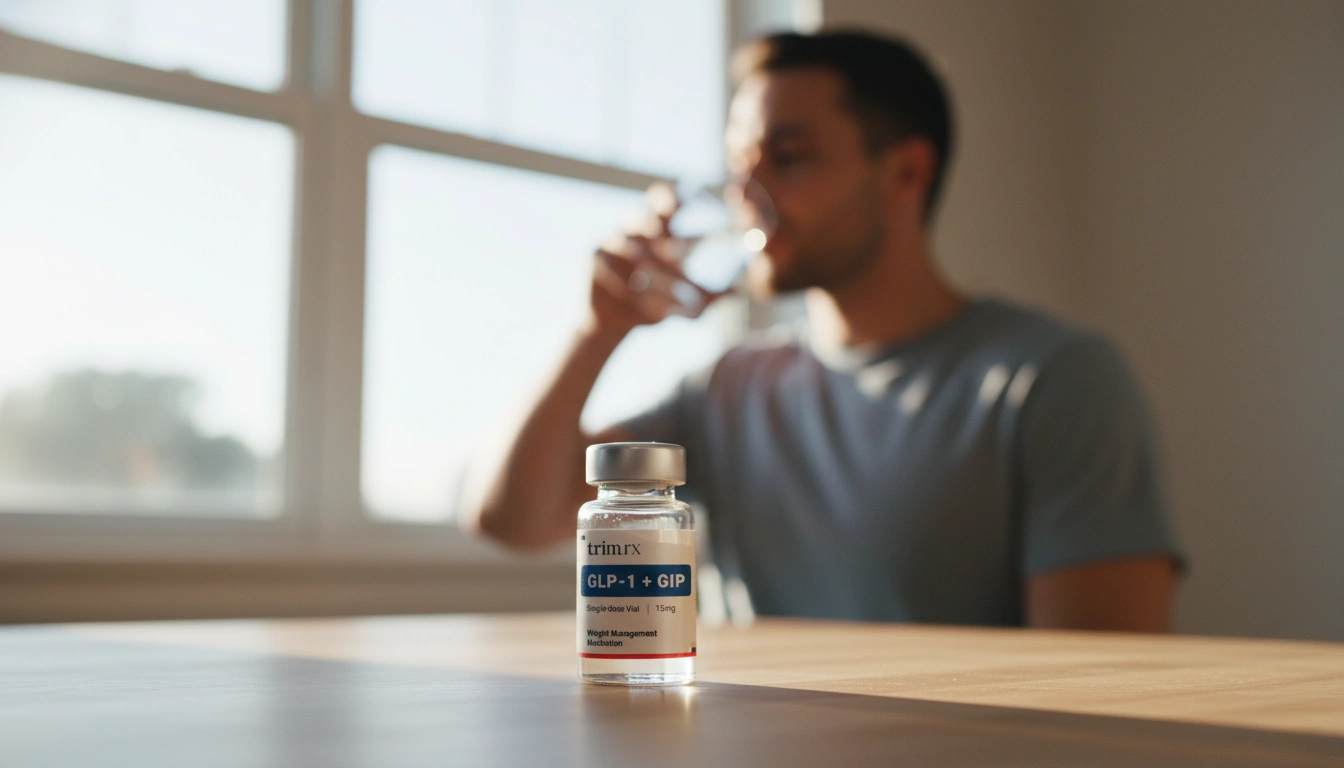Understanding the Side Effects of GLP-1 Agonists

Introduction
Did you know that nearly 42% of adults in the United States are categorized as obese, a condition that significantly increases the risk of various health issues, including type 2 diabetes and cardiovascular diseases? This alarming statistic highlights the critical need for effective weight management solutions. Among the innovative treatments available today, GLP-1 (glucagon-like peptide-1) agonists have gained considerable attention for their dual role in managing blood sugar levels and promoting weight loss. However, as with any medication, it’s essential to understand the potential side effects that may arise during treatment.
In this blog post, we will delve into the world of GLP-1 agonists, exploring what they are, how they work, and the side effects that some individuals may experience. By the end of this article, you will have a comprehensive understanding of GLP-1 agonists and their implications for your health. We will discuss the common and rare side effects, how to manage them effectively, and when to consult with a healthcare provider about your treatment options. Our goal is to provide you with valuable insights that empower you to make informed decisions on your weight loss journey.
We aim to clarify the complexities surrounding GLP-1 agonists and their side effects, allowing you to navigate your health with confidence. Our approach prioritizes safety and effectiveness, aligning with our mission at TrimRx to offer personalized, medically supervised weight loss solutions. We believe that understanding the potential impacts of any treatment is vital for achieving sustainable weight loss and overall well-being.
Let’s embark on this journey together, exploring the nuances of GLP-1 agonists and how they could fit into your health plan.
What are GLP-1 Agonists?
GLP-1 agonists are a class of medications primarily used to manage type 2 diabetes and obesity. They mimic the action of the naturally occurring hormone GLP-1, which is produced in the intestines in response to food intake. This hormone plays a crucial role in regulating blood sugar levels by stimulating insulin secretion and inhibiting glucagon release, thereby reducing glucose production in the liver. Additionally, GLP-1 influences appetite regulation, promoting feelings of fullness and reducing hunger.
There are several GLP-1 agonists available on the market, including:
- Semaglutide (Ozempic®, Wegovy®)
- Liraglutide (Victoza®, Saxenda®)
- Dulaglutide (Trulicity®)
- Exenatide (Byetta®, Bydureon®)
- Lixisenatide (Adlyxin®)
These medications can be administered via injection or, in the case of semaglutide, as a daily oral tablet. The choice of medication often depends on individual health needs, preferences, and specific treatment goals.
GLP-1 agonists have gained popularity not only for their effectiveness in managing diabetes but also for their ability to facilitate significant weight loss, making them an appealing option for those struggling with obesity. However, as with any treatment, understanding the potential side effects is crucial for safe and effective use.
Common Side Effects of GLP-1 Agonists
While GLP-1 agonists have proven to be effective in managing blood sugar levels and aiding weight loss, they can also cause side effects. Many individuals experience mild to moderate symptoms, particularly when starting treatment or adjusting doses. Here are some of the most common side effects associated with GLP-1 agonists:
1. Gastrointestinal Issues
Gastrointestinal symptoms are among the most frequently reported side effects of GLP-1 agonists. These can include:
- Nausea: This is often the most common side effect, affecting up to 50% of users, especially during the initial stages of treatment. It tends to diminish over time as the body adjusts to the medication.
- Vomiting: Some individuals may experience vomiting, which can be distressing and lead to dehydration if not managed properly.
- Diarrhea and Constipation: Both diarrhea and constipation can occur, with diarrhea being more prevalent in the initial treatment phase.
- Abdominal Pain: Some users report discomfort or pain in the abdominal region, which can vary in intensity.
These gastrointestinal symptoms are generally dose-dependent, meaning they may worsen with higher doses of the medication. To help mitigate these effects, we encourage individuals to start on a lower dose and gradually increase it, allowing the body to adapt.
2. Reduced Appetite
Another notable effect of GLP-1 agonists is a reduction in appetite. While this can be beneficial for weight loss, it may lead to inadequate nutrient intake if not monitored. We recommend that individuals using GLP-1 medications maintain a balanced diet, ensuring they meet their nutritional needs while managing their weight effectively.
3. Injection Site Reactions
For those using injectable forms of GLP-1 agonists, reactions at the injection site can occur. This may include:
- Redness
- Swelling
- Itching
These reactions are typically mild and resolve on their own. However, if symptoms persist or worsen, it’s essential to consult with a healthcare provider.
Rare but Serious Side Effects
While most side effects of GLP-1 agonists are mild and manageable, there are rare but potentially serious side effects that warrant attention.
1. Pancreatitis
There have been reports linking GLP-1 agonists to pancreatitis, an inflammation of the pancreas that can cause severe abdominal pain and may require medical intervention. Symptoms of pancreatitis can include:
- Severe abdominal pain that may radiate to the back
- Nausea and vomiting
- Fever
- Rapid pulse
If you experience these symptoms, it’s crucial to seek medical attention immediately.
2. Thyroid Tumors
Animal studies have shown a potential risk of thyroid tumors associated with GLP-1 agonists, particularly medullary thyroid carcinoma. Although this risk has not been conclusively demonstrated in humans, individuals with a personal or family history of thyroid cancer should discuss this concern with their healthcare provider before starting treatment.
3. Kidney Issues
There have been cases of acute kidney injury reported in individuals using GLP-1 agonists, particularly in those who experienced severe gastrointestinal side effects leading to dehydration. It’s vital to stay well-hydrated while on these medications.
4. Allergic Reactions
Though rare, some users may experience allergic reactions to GLP-1 agonists, which can manifest as rash, itching, or swelling. Severe allergic reactions, such as anaphylaxis, are very rare but require immediate medical attention.
Managing Side Effects
Understanding how to manage side effects effectively can enhance your experience with GLP-1 agonists. Here are some strategies:
- Start Low, Go Slow: If you are beginning treatment with a GLP-1 agonist, starting at a lower dose can help reduce the risk of side effects. Gradually increasing the dose allows your body to adjust.
- Stay Hydrated: Drinking plenty of fluids can help manage gastrointestinal side effects and prevent dehydration, especially if you experience nausea or diarrhea.
- Monitor Your Diet: Focus on a balanced diet that includes nutrient-dense foods. High-protein meals can help mitigate feelings of nausea and support muscle maintenance during weight loss.
- Consult Your Healthcare Provider: Regular check-ins with your healthcare provider can help you assess the effectiveness of your treatment and make necessary adjustments. If side effects become bothersome, your provider may recommend a different medication or dosage.
- Be Aware of Warning Signs: Understanding the symptoms of serious side effects, such as pancreatitis or severe allergic reactions, can help you act quickly if they arise.
When to Consult a Healthcare Provider
It’s essential to maintain open communication with your healthcare provider throughout your treatment journey. You should reach out if you experience:
- Severe or persistent nausea, vomiting, or abdominal pain
- Symptoms of pancreatitis, such as severe abdominal pain that may radiate to the back
- Signs of an allergic reaction, including rash, itching, or swelling
- Changes in urination or symptoms of dehydration
Remember, your healthcare provider is your partner in navigating medication and managing your health. They can provide personalized recommendations tailored to your needs and circumstances.
Conclusion
GLP-1 agonists represent a promising option for individuals looking to manage weight and blood sugar levels effectively. While they offer significant benefits, understanding the potential side effects is crucial for safe and successful treatment. By being aware of both common and rare side effects, you can take proactive steps to manage them and engage in productive conversations with your healthcare provider.
At TrimRx, we believe in empowering our patients with knowledge and personalized support on their weight loss journeys. If you’re considering a GLP-1 agonist as part of your weight management strategy, we encourage you to take our free assessment quiz to determine your eligibility for our prescription weight loss medications.
Additionally, for immediate support, check out our quick-access supplements, including GLP-1 Daily Support and Weight Loss Boost, designed to complement your weight loss program and enhance your overall wellness.
FAQ
What are GLP-1 agonists used for?
GLP-1 agonists are primarily used to manage type 2 diabetes and support weight loss in individuals with obesity.
How do GLP-1 agonists work?
These medications mimic the action of the GLP-1 hormone, which helps regulate blood sugar levels and promotes feelings of fullness.
What are the common side effects of GLP-1 agonists?
Common side effects include nausea, vomiting, diarrhea, constipation, and injection site reactions.
Are there serious side effects associated with GLP-1 agonists?
Yes, rare but serious side effects can include pancreatitis, thyroid tumors, kidney issues, and allergic reactions.
When should I contact my healthcare provider while taking a GLP-1 agonist?
You should contact your provider if you experience severe gastrointestinal symptoms, signs of pancreatitis, or any allergic reactions.
By understanding GLP-1 agonists and their side effects, you can make informed decisions about your weight loss journey and take control of your health. Together, we can navigate your unique path to a healthier lifestyle.

Transforming Lives, One Step at a Time
Keep reading
7 Tips for Sticking to GLP-1 Injection Schedules
Seven practical strategies to keep weekly GLP‑1 injections on schedule—pick a routine day, set reminders, manage side effects, rotate sites, and avoid missed doses.
Custom GLP-1 Dosing for Kidney Disease
Personalized GLP-1 dosing for CKD patients with monitoring, dehydration and hypoglycemia risk mitigation, and guidance across all kidney disease stages.
Semaglutide vs Tirzepatide: Approved Uses
Two leading diabetes and weight-loss drugs differ in FDA-approved benefits — one adds heart, kidney and liver protection; the other treats obstructive sleep apnea.



